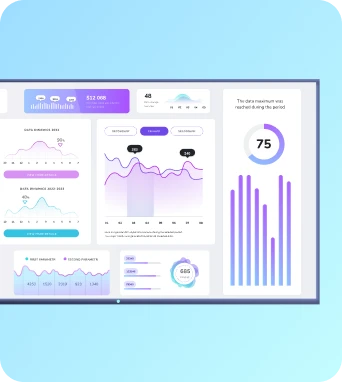Ad impression tracking
Ad impression tracking records each instance an advertisement is displayed on a screen, capturing time, location, duration and playback status. In digital signage it verifies content delivery, supports billing and campaign analytics, and helps operators measure viewability, compliance and programme effectiveness across networks of TVs and displays.
Ad impression tracking
How impression tracking works
Impression tracking in digital signage relies on a combination of device-side logging, scheduled reporting and central aggregation. Media players generate event logs when an asset starts and stops, recording timestamps, duration and error codes. These logs are sent to a central service either in real time or at defined intervals, depending on network reliability and bandwidth constraints. Some implementations add heartbeat messages that confirm the device is online and reporting, while others include checksum or signature verification to ensure the logged asset matches the intended file. For networks requiring higher assurance, optional video frame capture or edge analytics can provide visual proof of playback, though this introduces higher storage and privacy considerations.
Reliable tracking depends on synchronising device clocks, handling offline playback gracefully and deduplicating repeated reports. When players cache content for offline play, impression records should include a played-from-cache flag and an upload timestamp to show when the event was transmitted. Aggregation layers reconcile incoming events against the scheduled playlist, mapping each impression to a campaign and calculating metrics such as completed plays, partial plays and average play duration. Secure transport, tamper-evident logs and clear event schemas help maintain trust with advertisers and automate reconciliation with billing systems.
Using impression data
Impression data is the primary signal for reporting campaign performance, informing both operational decisions and commercial reconciliation. For campaign managers, aggregated counts of completed plays by location and time window reveal which sites and times yield the best reach, enabling optimisation of rotation, frequency capping and creative testing. Viewability metrics can be derived by combining playback duration with contextual signals such as screen orientation, hours of operation and occupancy data where available. This lets teams focus spend on placements that deliver meaningful exposure rather than raw play counts.
For finance and ad ops, audited impression logs form the basis of billing and dispute resolution. Reconciliation workflows compare scheduled airtime with recorded impressions, flagging mismatches for investigation and crediting. Sampling and confidence thresholds are common where full-frame verification is impractical; networks define minimum completion percentages to count an impression. IT teams should also monitor for systemic issues such as clock drift, failed uploads or inconsistent player firmware, because these affect the accuracy of reports. Open APIs and standardised event schemas make it easier to export impressions to third-party analytics, ad servers and BI tools while preserving data provenance and audit trails.
Implementation considerations
Keep the learning going...
Adaptive brightness
Adaptive brightness is a display feature that automatically adjusts screen luminance in response to ambient light, content and schedules. On digital signage and TV dashboards it optimises readability, reduces power consumption and helps extend panel lifetime by avoiding excessive brightness while supporting night modes and viewer comfort.
Adaptive content rendering
Adaptive content rendering is a technique for digital signage that dynamically modifies media presentation based on screen size, orientation, network bandwidth and contextual signals such as time, location and audience. It ensures legibility, consistent branding and efficient use of resources by choosing appropriate layouts, resolutions, codecs and fallback assets for each display.
Adaptive streaming
Adaptive streaming is a delivery method that changes video bitrate and resolution in real time to match current network bandwidth and device capability. It divides content into short segments encoded at multiple qualities so players can switch between streams to prevent buffering and keep playback continuous on signage displays.



